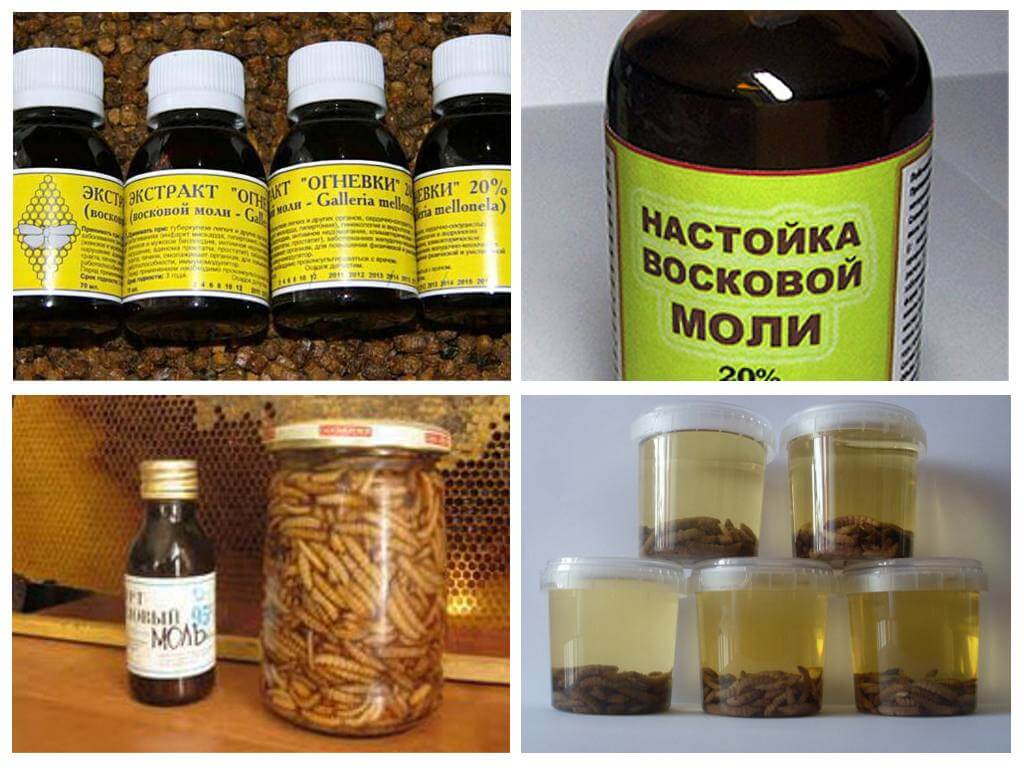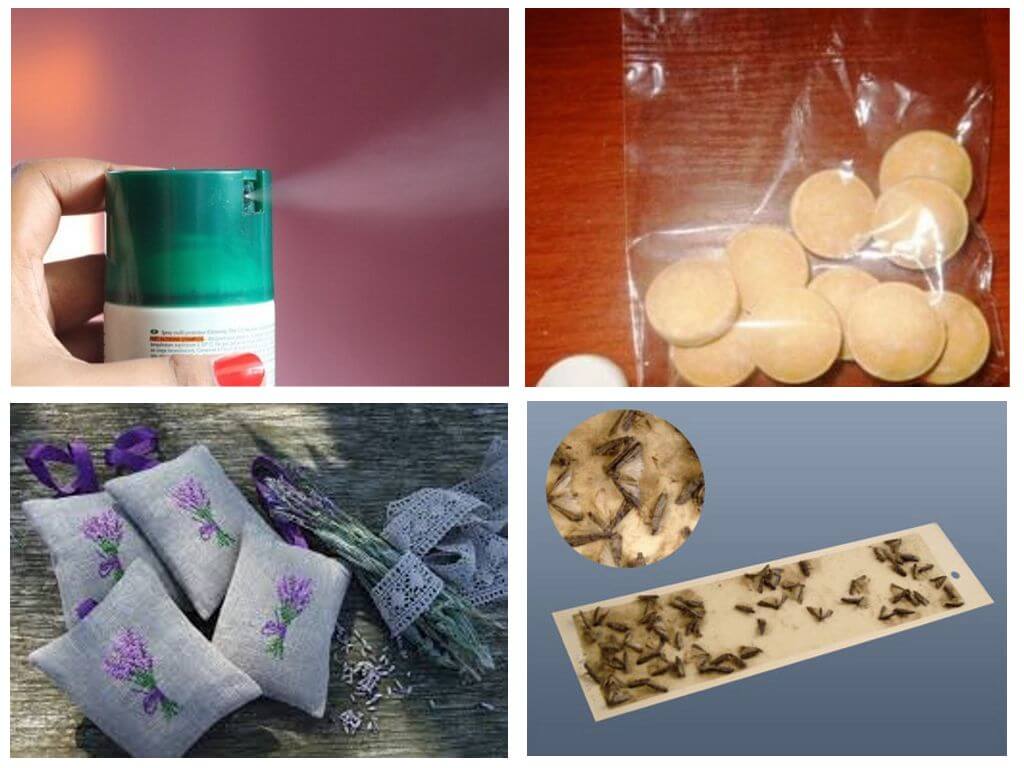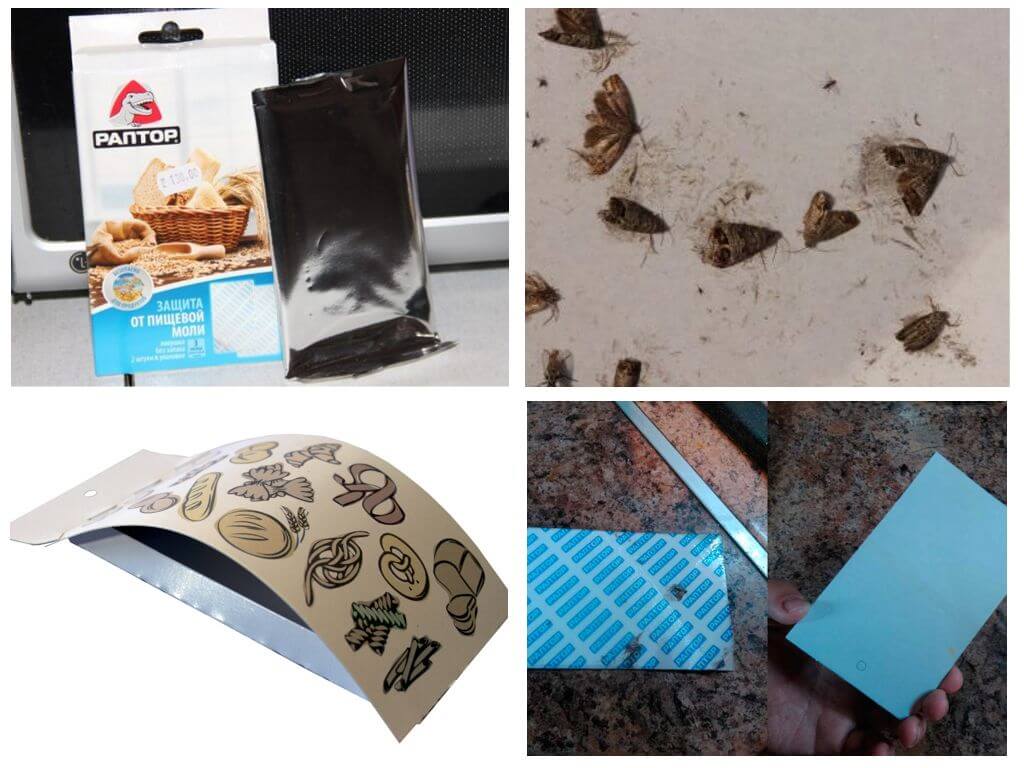- Food moth
- Clothes moth
- Food moth
- Moth Prevention
Food moth is common in human housing. The name is common, in fact, this includes a huge number of flying insects that feed on various products. And not a single, even megachist-dense, mistress can be sure that this pest will not be in her kitchen. The parasite multiplies very quickly, eats a lot of food, is dangerous for a large number of products. Let’s see what moth eats and how to save food from it.
Danger to humans
This butterfly can live not only in kitchens, but also in industrial warehouses, where it spoils a huge amount of cereals intended for sale. An unscrupulous manufacturer, having learned that a moth has settled in its products, does not destroy it, but sells it with a certain markdown (at best). By purchasing products at a reduced price, we can well bring not only them to the house, but also everything that managed to settle in such a product. Such a butterfly is not dangerous for human health.
The food moth causes enormous damage to food products, and there are few who want to see a floating worm in its own plate. Adult moth has no proboscis and does not feed on our products, but lays eggs in them, from which larvae gobble up our food.
What is food moth (its larvae) becomes unusable, because the worms not only eat food, but also spoil them and die.
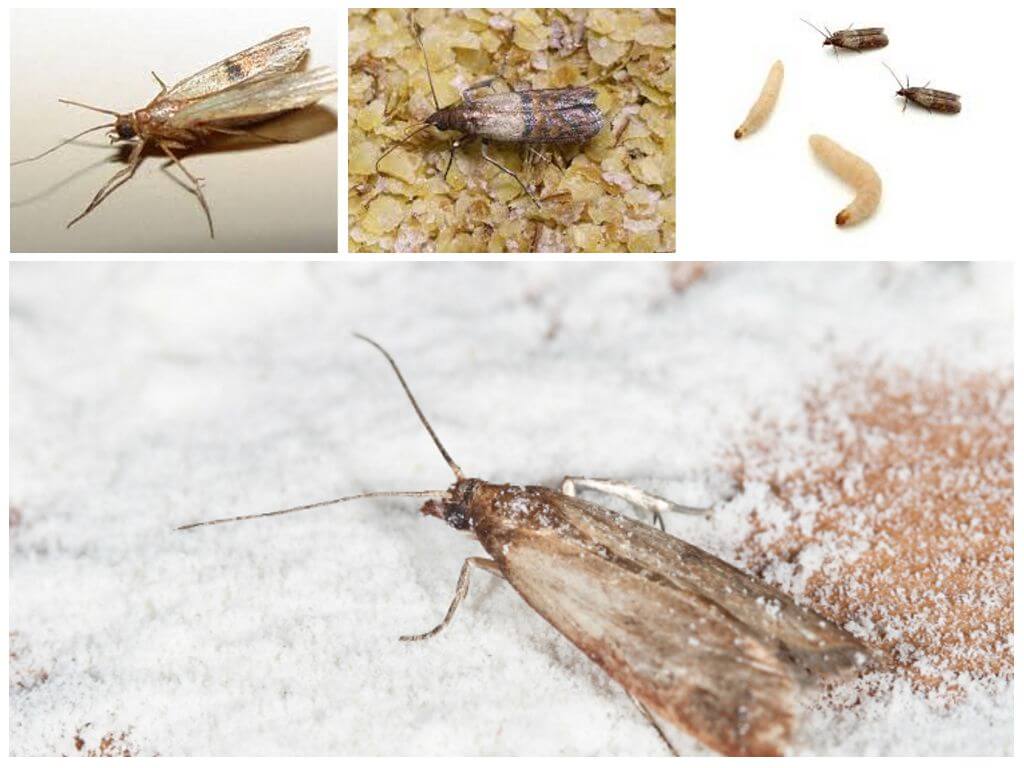
What eats
In nature, these insects eat the fruits of plants, grains, nuts, seeds. Their whole life is strictly subordinated to seasonal changes in climate. The appearance of man made it possible for moths to live in more comfortable and favorable conditions. It’s not difficult to find out what the moth eats in the apartment: it’s enough just to open a cabinet with products and carefully examine them.
The term "food moth" refers to several varieties of moths. This may include cereal, and potato mothbarn flour moth and many of its other species. Each of them prefers to eat different foods:
- flour;
- rice
- cereals;
- dried fruits;
- pasta;
- Confectionery
- cereals, etc.
Noticing an adult parasite and its larvae is not easy, as they hide just fine. But to notice the traces of their life in the place of residence is quite possible.
- In the kitchen you can see small plain-looking butterflies;
- In packages with products the web is noticed;
- Grains and flour stick together into lumps;
- In sweets and chocolate passages and labyrinths are visible;
- A close examination of the products shows skins from the larvae;
- Small caterpillars crawl in groats.
Each of these signs means that some kind of moth has settled in the house. It is necessary to take measures to eliminate it as soon as possible so as not to see not only how the moth eats, but also in what inconceivable quantities it does.
Food pest and fur coat
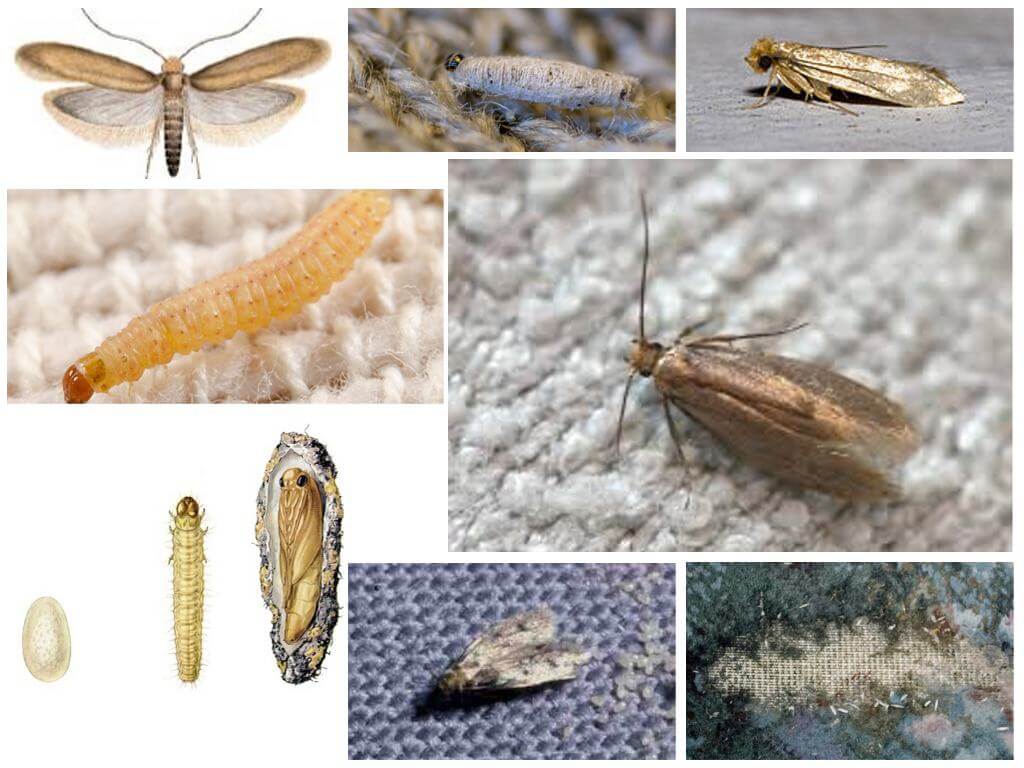
Many housewives who notice a butterfly in the kitchen cabinet begin to worry about whether food moth can eat clothes. If the butterflies of the food representatives of the moth are noticed, then you can not worry about cashmere coats and fur coats - this insect eats only our food.Moth enzymes that break down the product are too “weak” and will not cope with thick fibers. Spoils clothes a completely different kind of insect - clothing. In order not to worry about whether the food is eating food moth, the contents of the cabinet should be carefully sorted and ventilated for prevention. At the end of the procedure, place pest repellers in a closet and covers for outerwear.
How to deal with food moth
At the first sign of the appearance of flying parasites in the apartment should begin fight moth - only in this case the losses will not be so large. Experts say that one moth butterfly can lay up to 100 eggs per day. Just a few adult individuals, it is not difficult to calculate, can spoil all available products in 5-10 days. In order to get rid of the pest, it is necessary to carry out a set of measures. It concerns those foods that eat food moth.
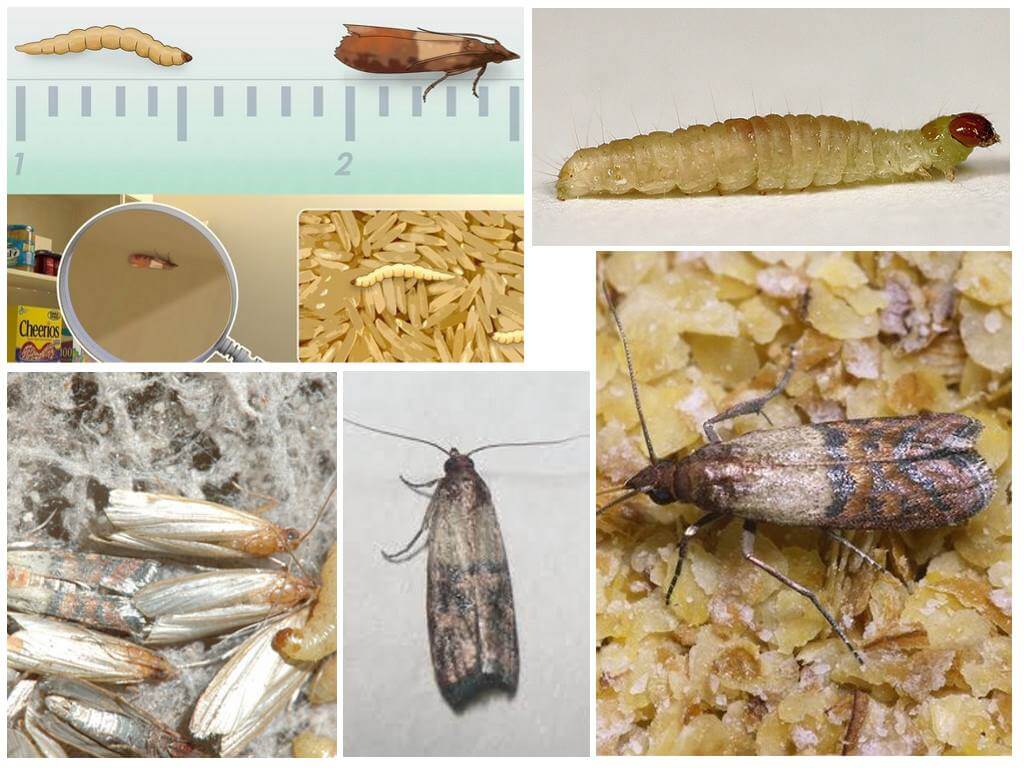
On a note!
First of all, you should carefully sort through all the cereals, pasta, cereals, looking for among them those that are noticeable moth larvae or their metabolic products. Having found such food, you should immediately throw it away. Cabinets in which food is stored should be processed special moth chemicals or water and laundry soap. Adults can be caught in special moth traps.
Nowadays, there are no super ways to deal with moths, so everything should be done as it has been done for decades:
- Contaminated products should be thrown into a far away container or burned. Throwing into a bucket is pointless - the larvae will "scatter" throughout the kitchen;
- Warming up or freezing an already spoiled product is pointless. In this way, only those who were in the closet are treated in the same way;
- The insect has no seasonality, so it will not disappear. It is necessary to start the fight on the same day when the first signs of its appearance appeared.
Prevention
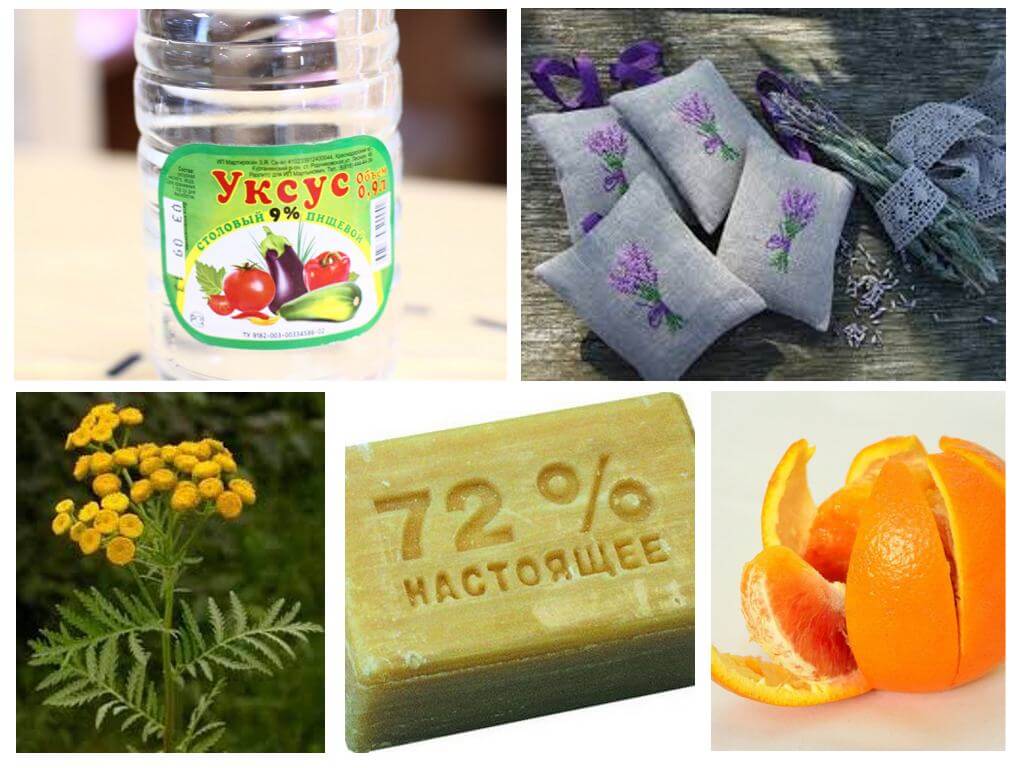
So that the mole that has already entered the apartment can’t multiply, everything must be done to scare it away. Insects will never settle in a closet that smells:
- Plants: rosemary, lavender, dill, tansy, bay leaf, wormwood;
- Citrus fruits;
- Some types of technical equipment;
- Vinegar
- Essential oils;
- Laundry soap.
Moth does not like the sun and dry air. Therefore, to protect the products, it is necessary to regularly air the cabinets, wash them with soap and vinegar and thoroughly dry them.




